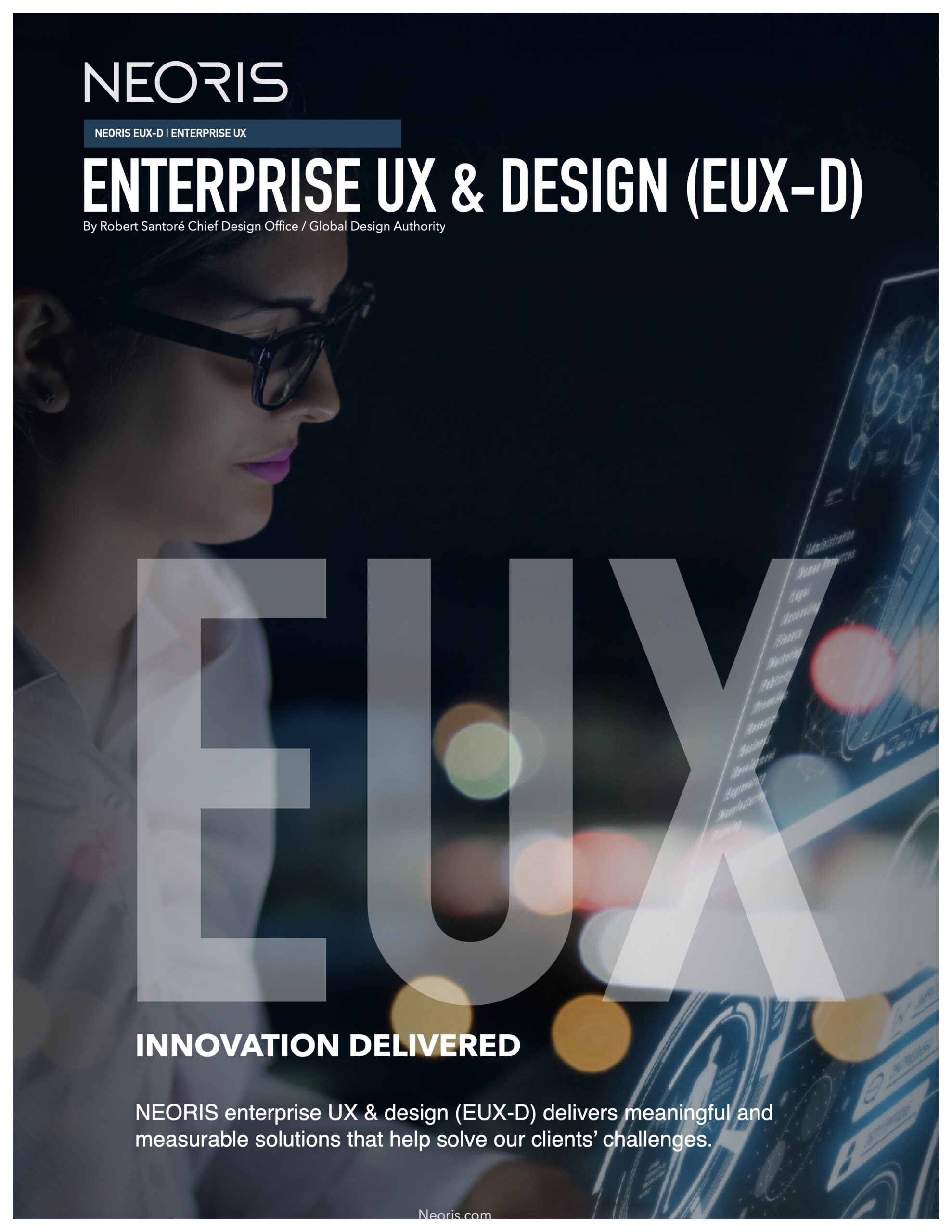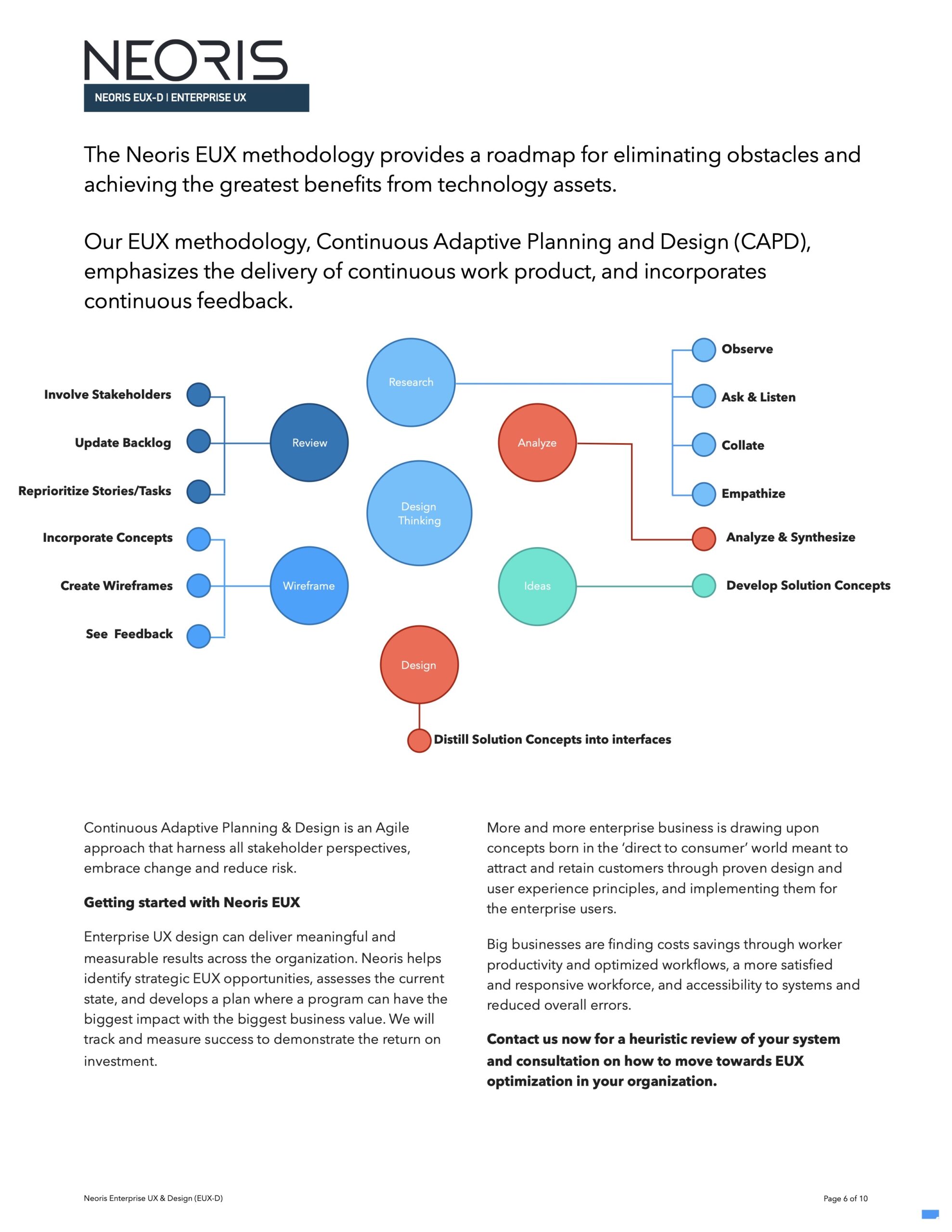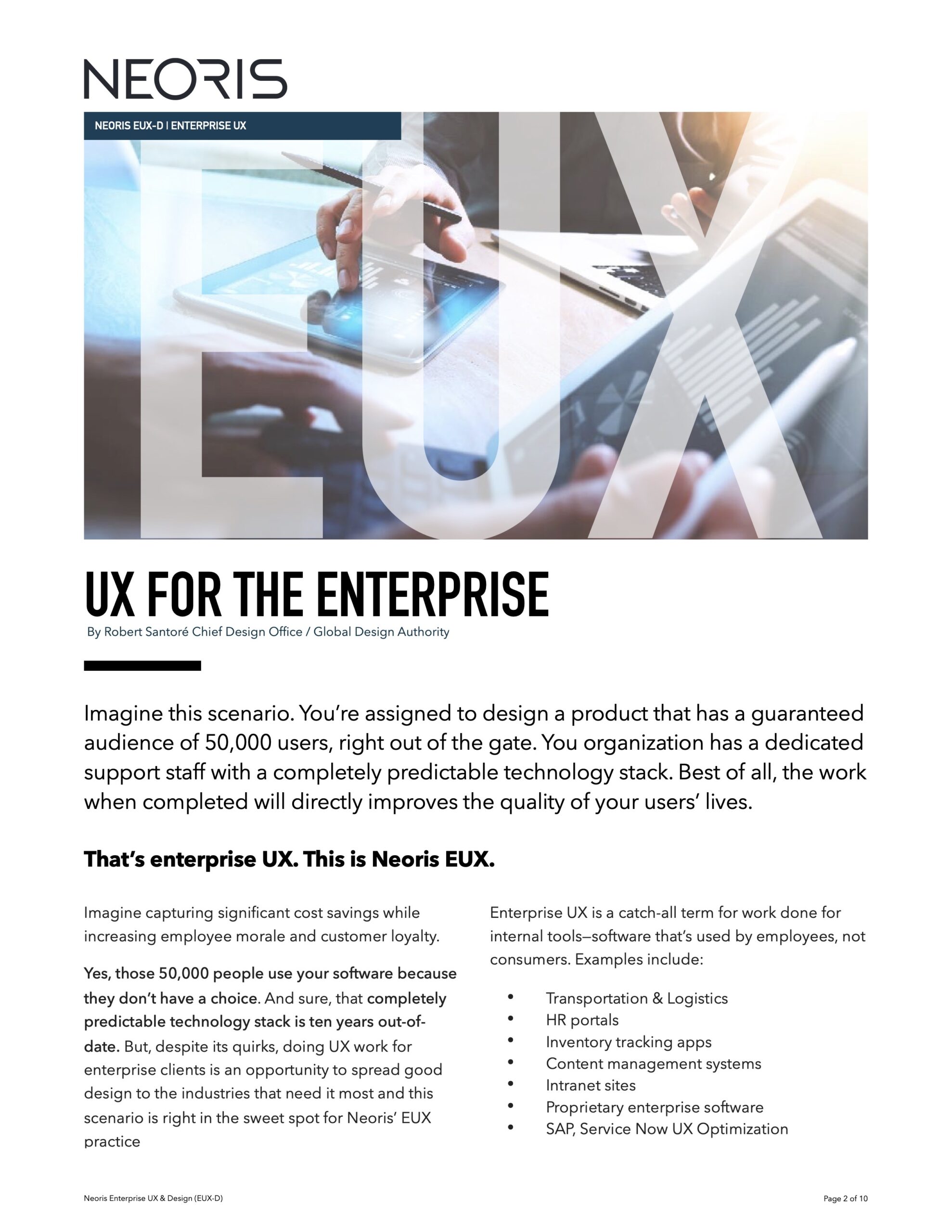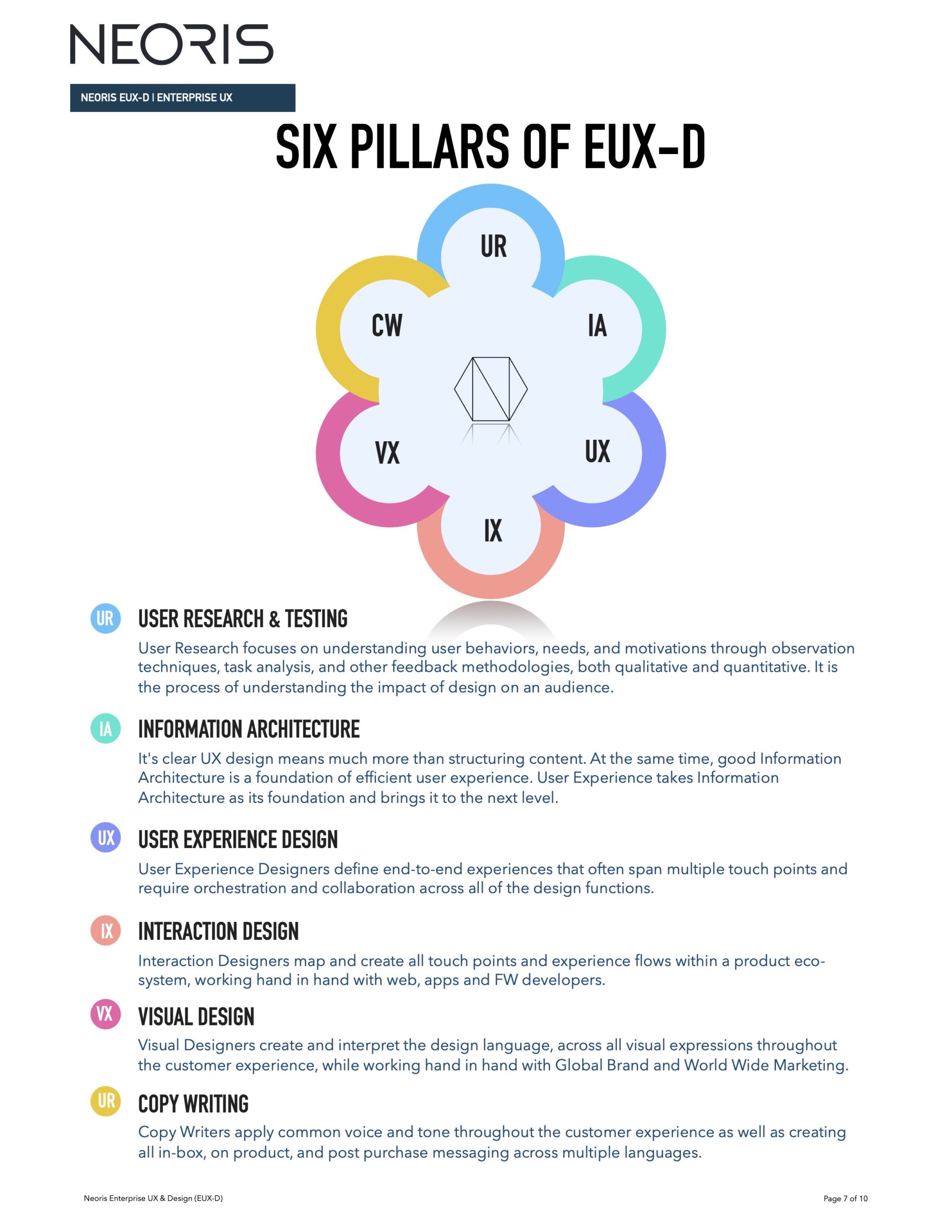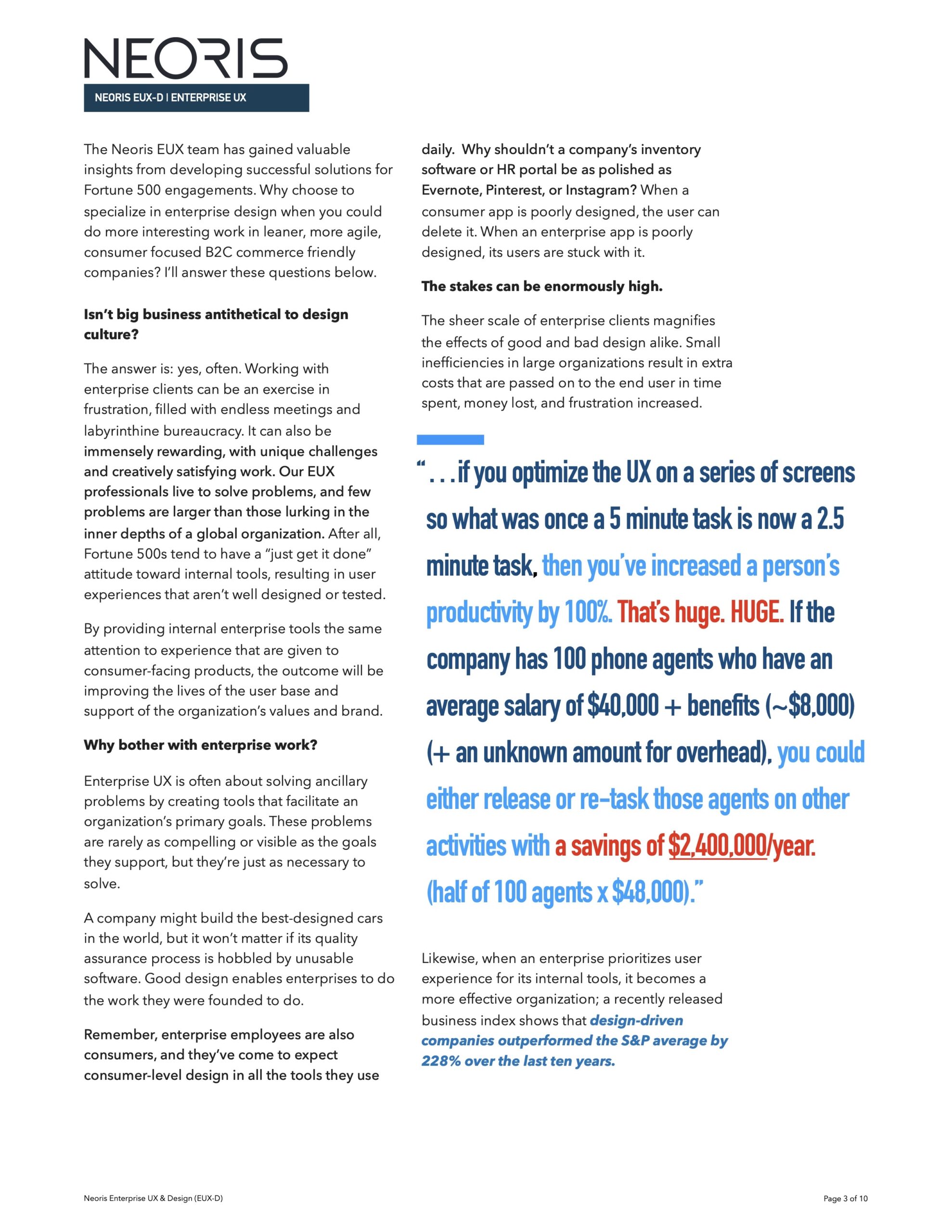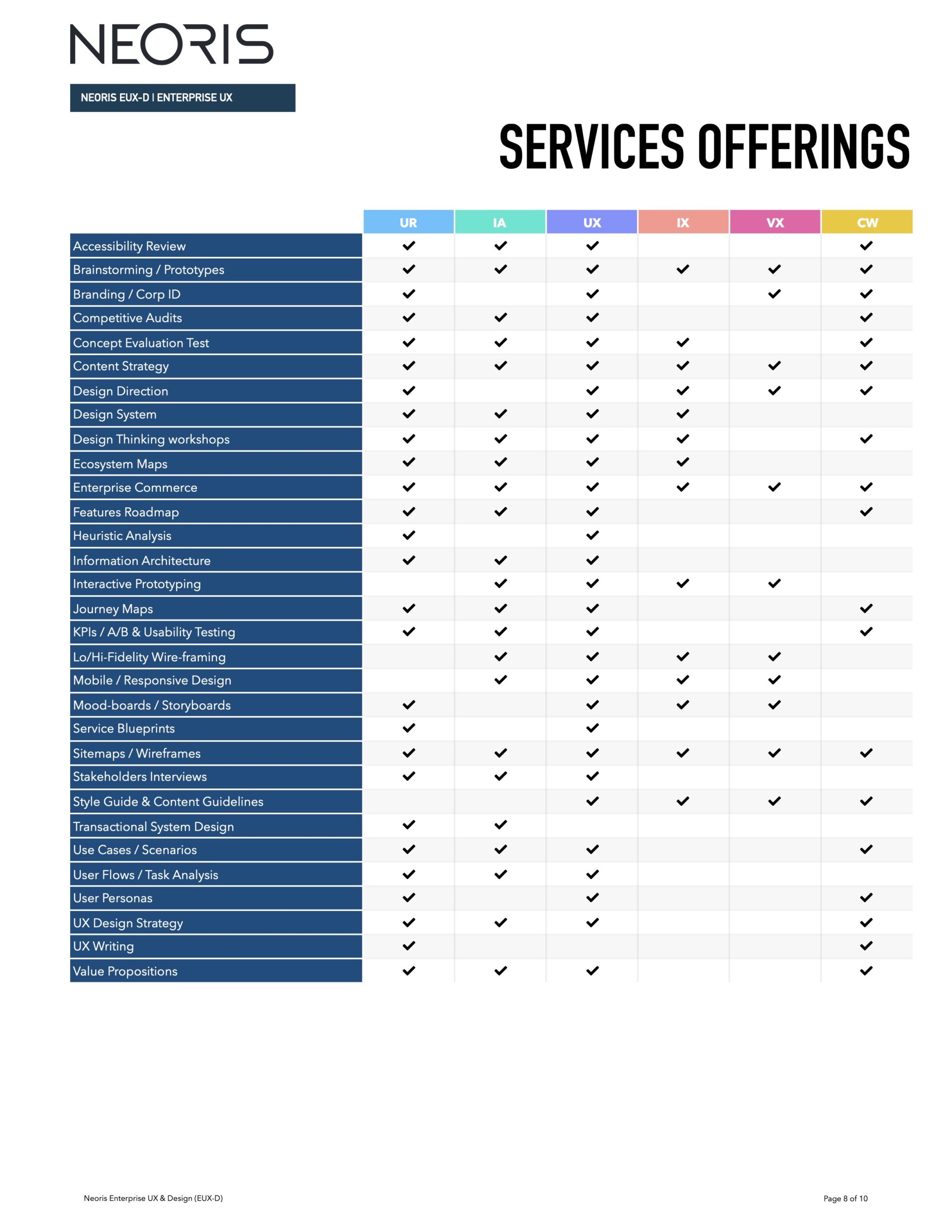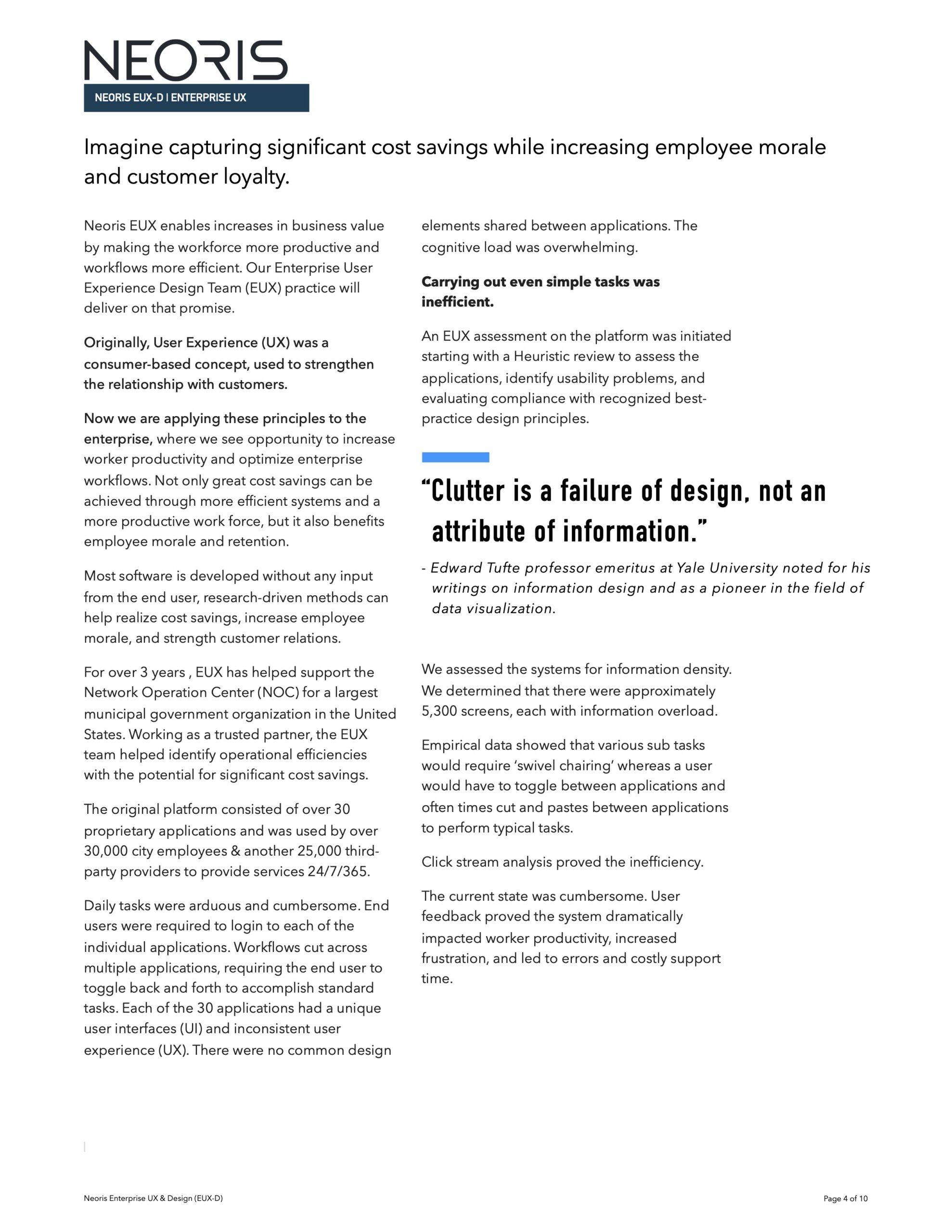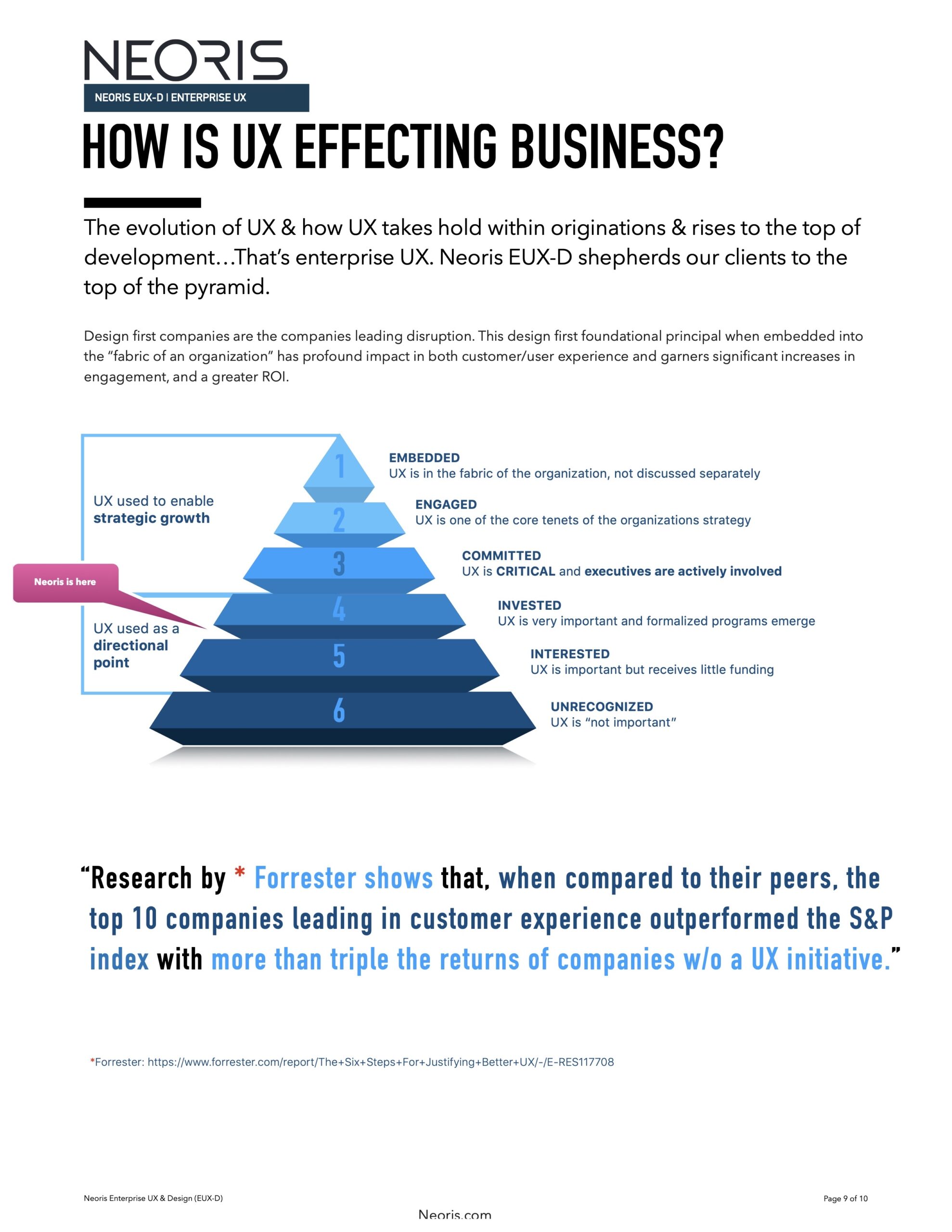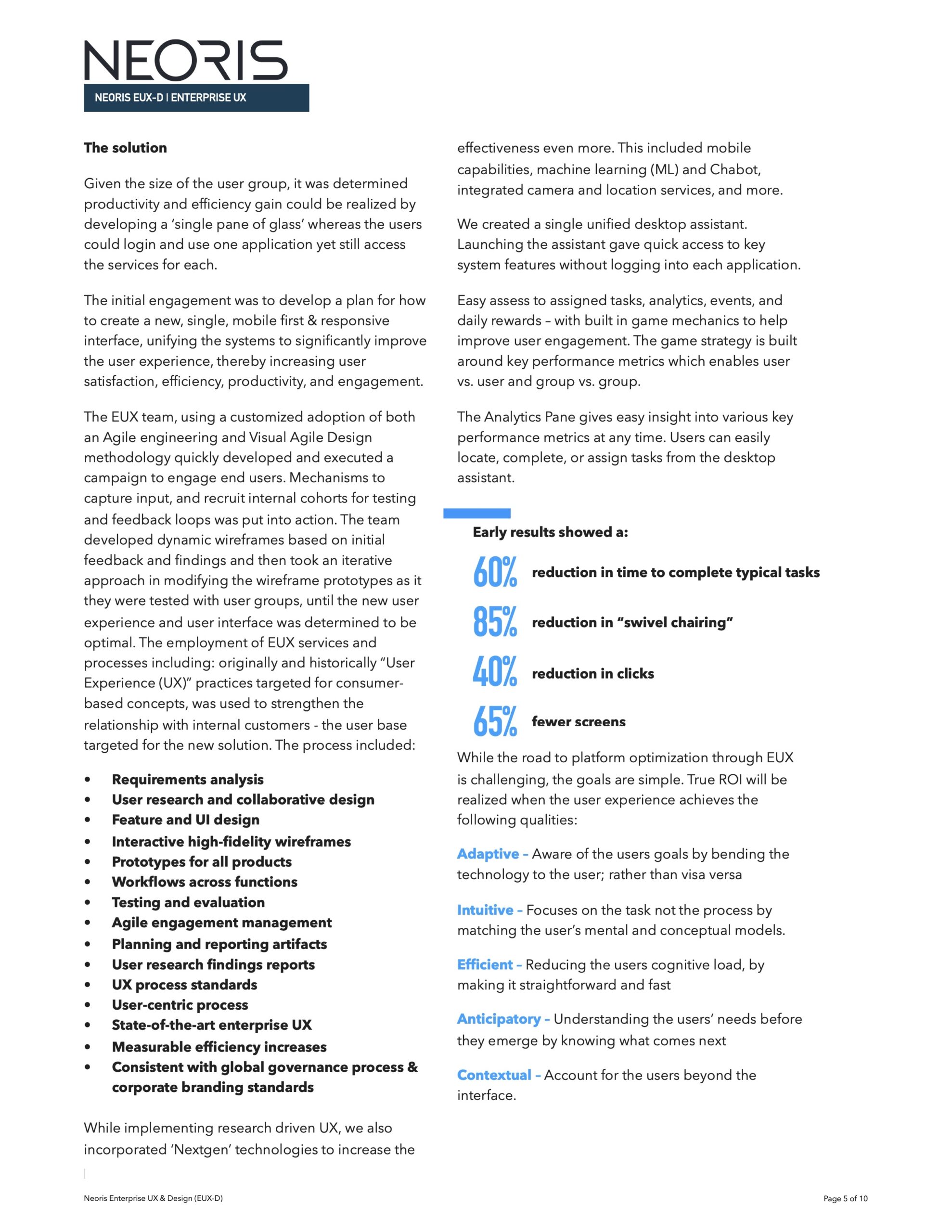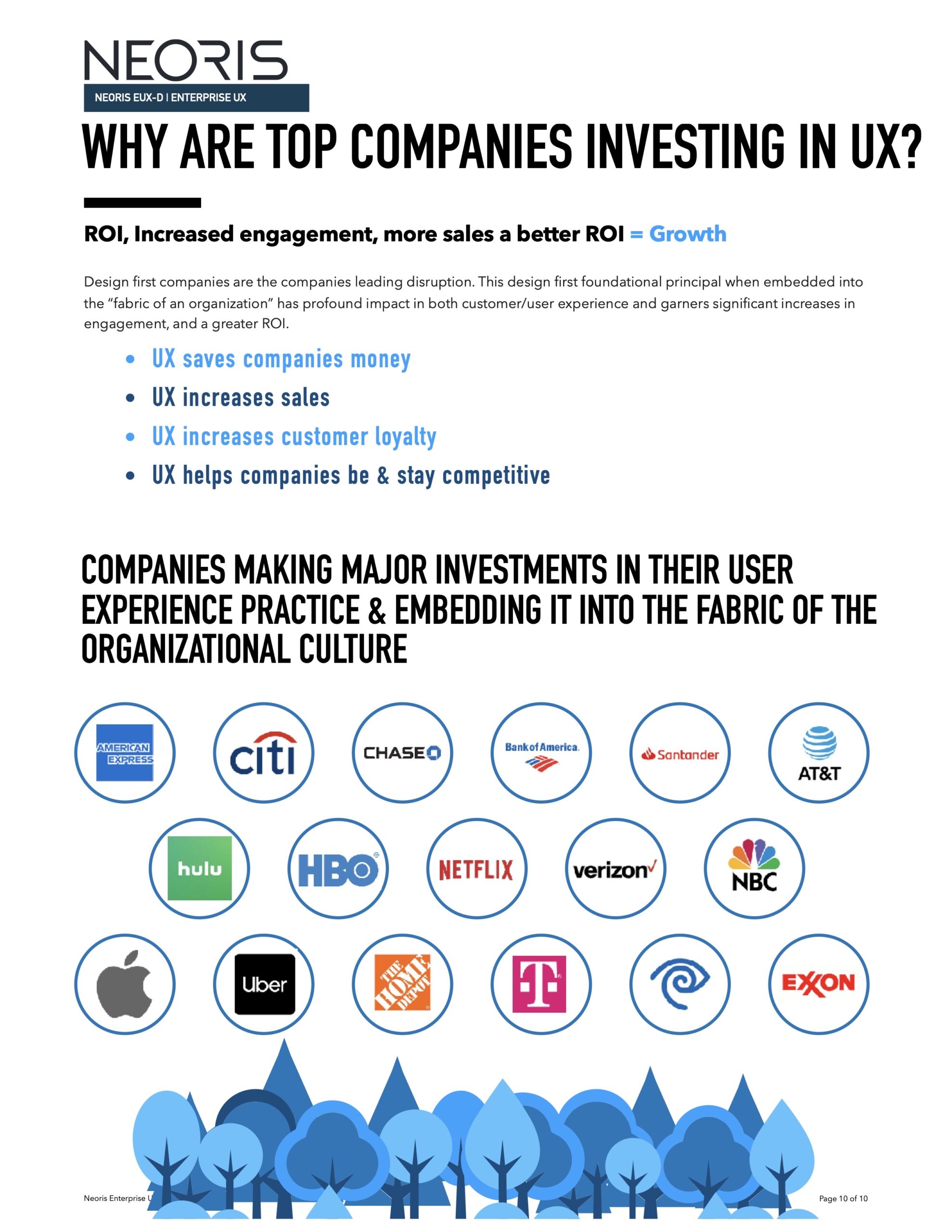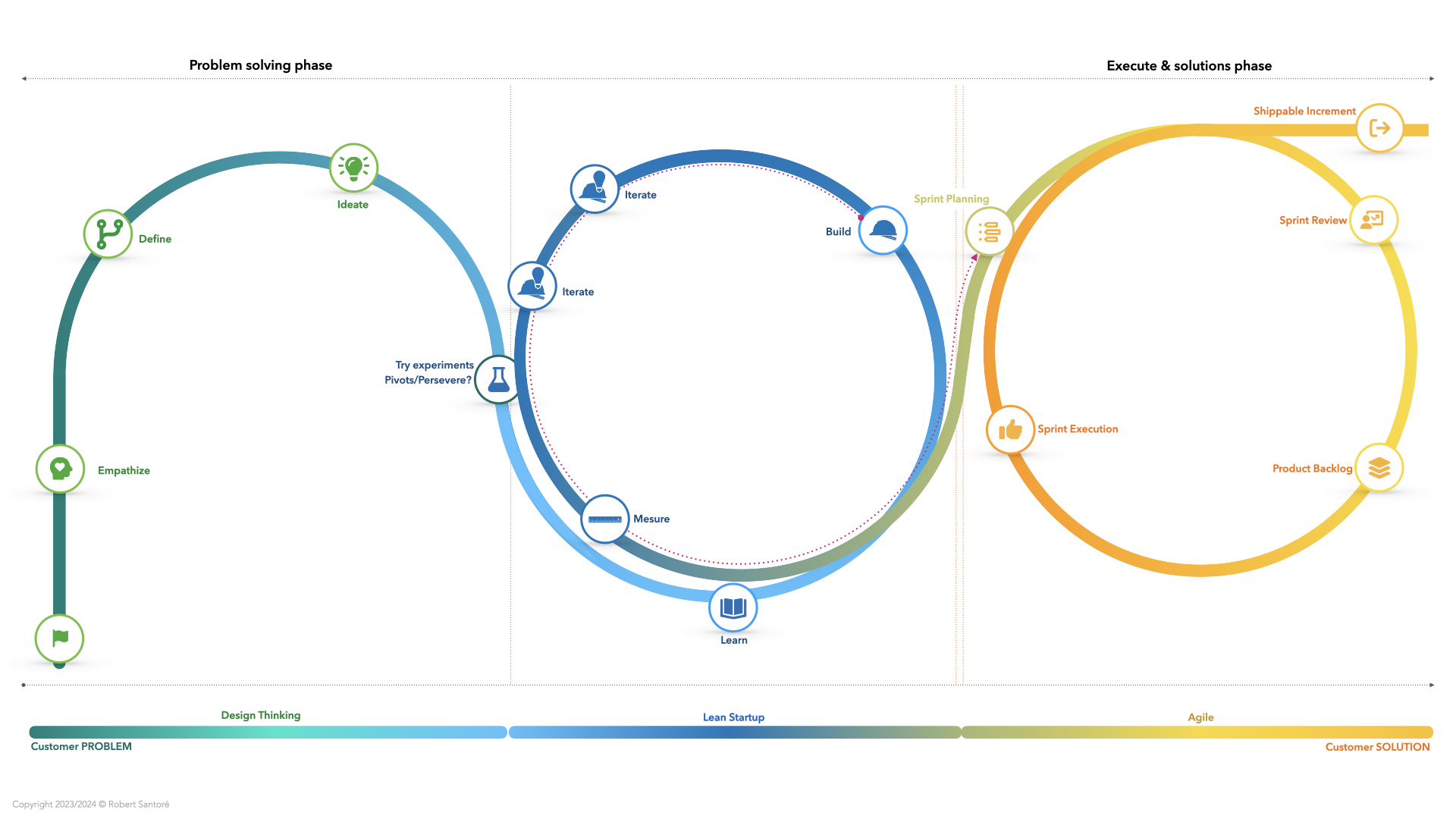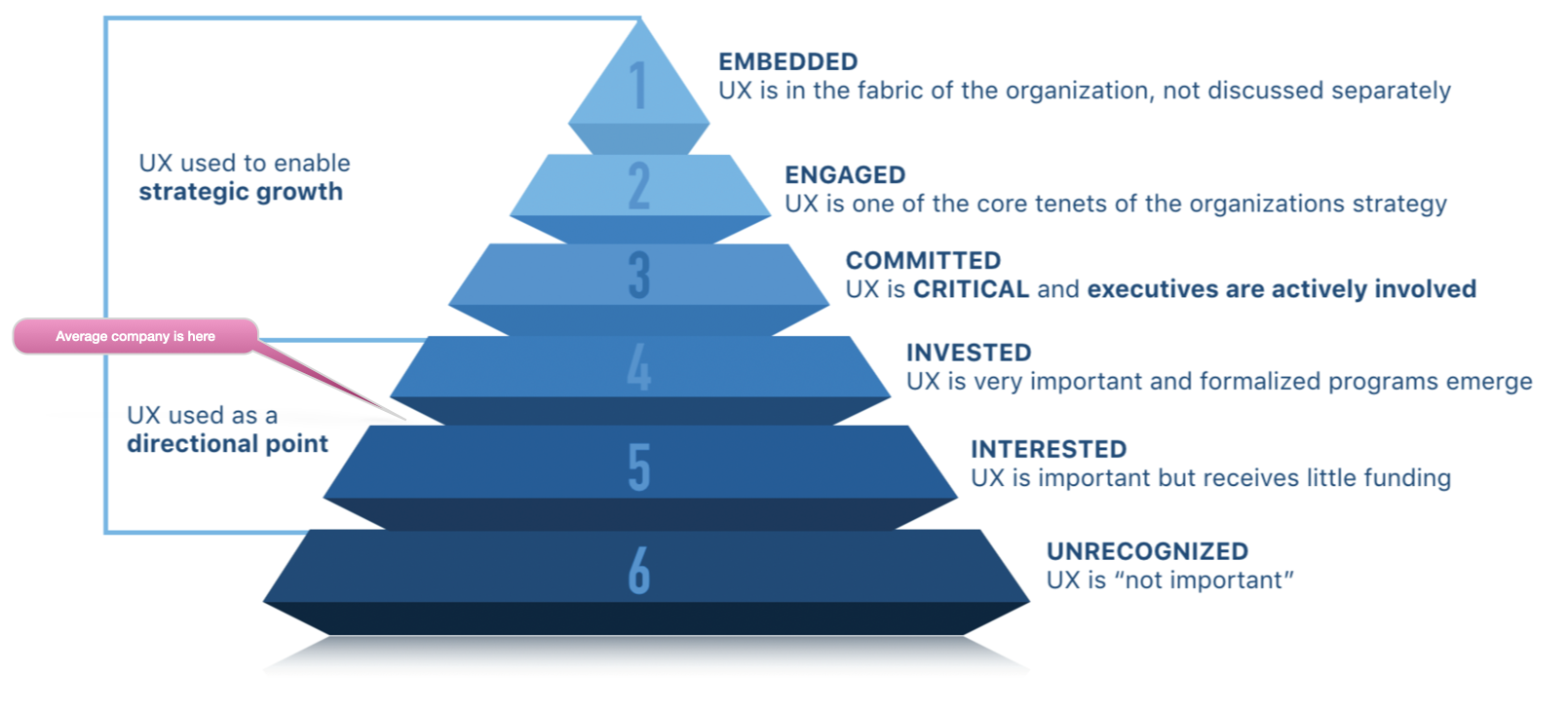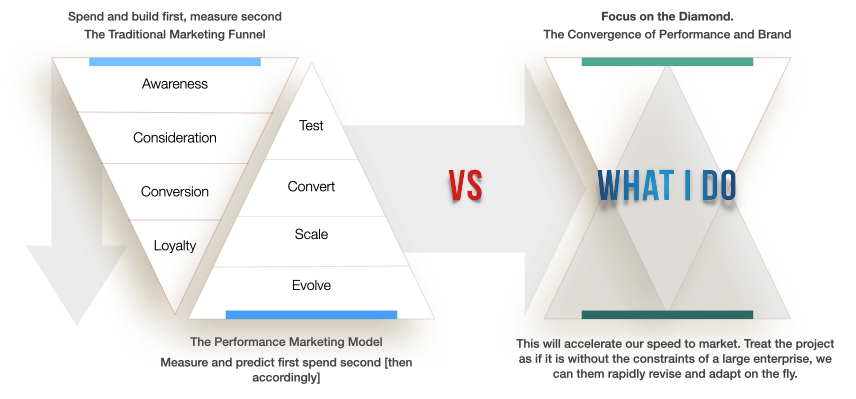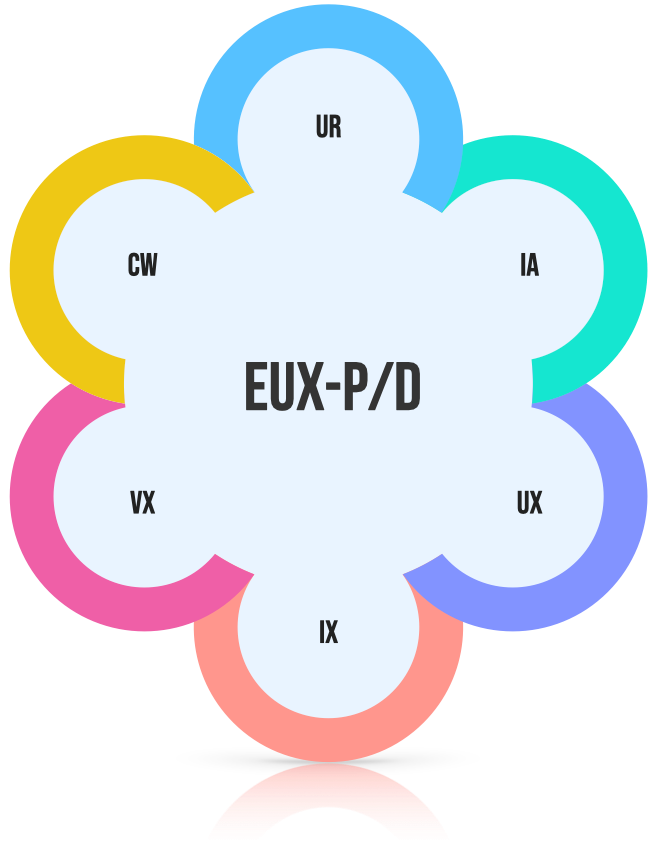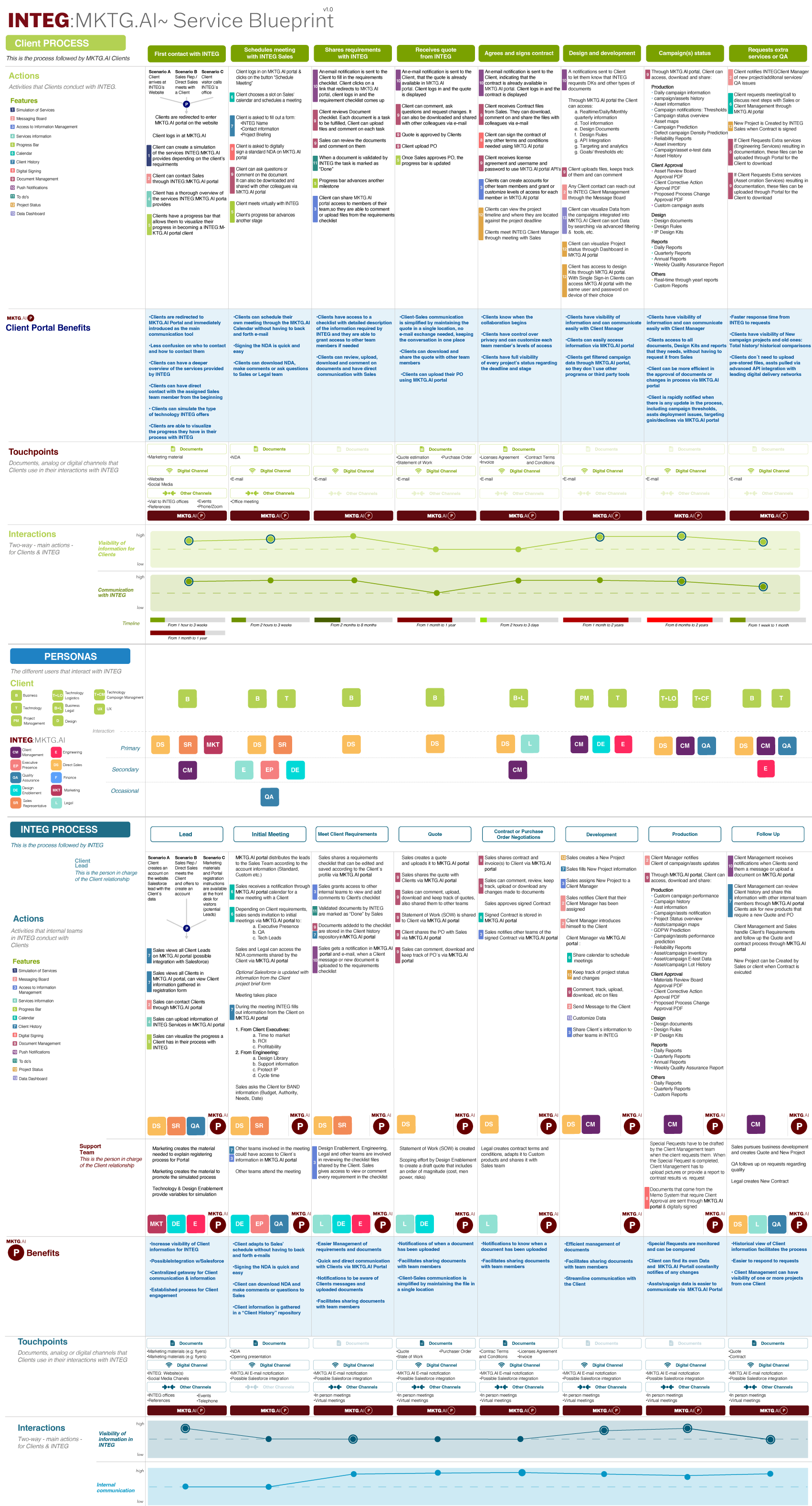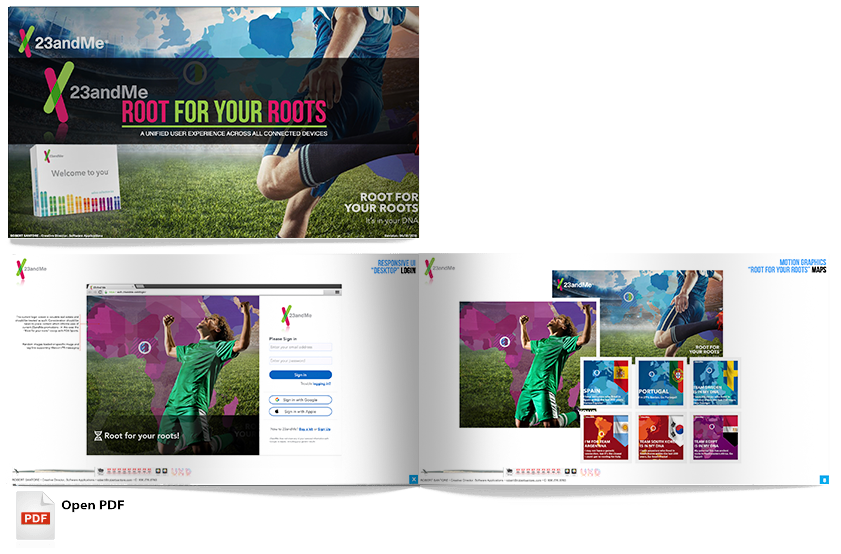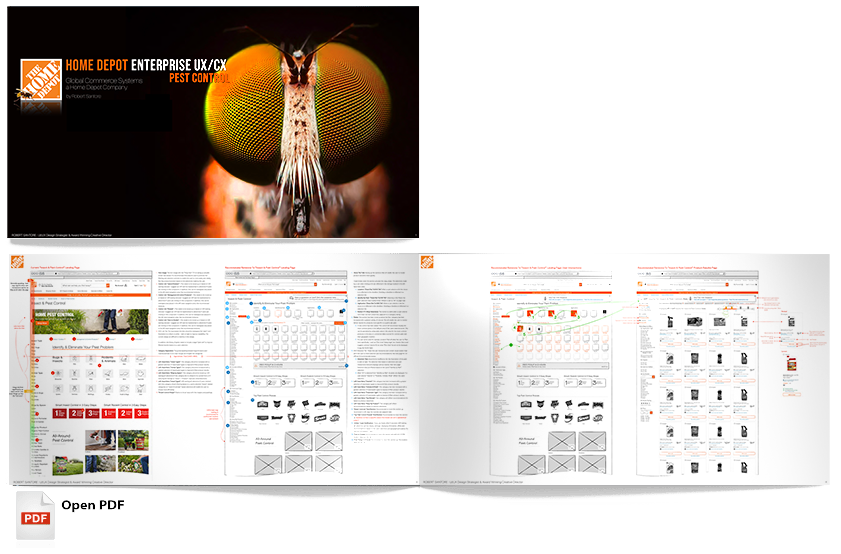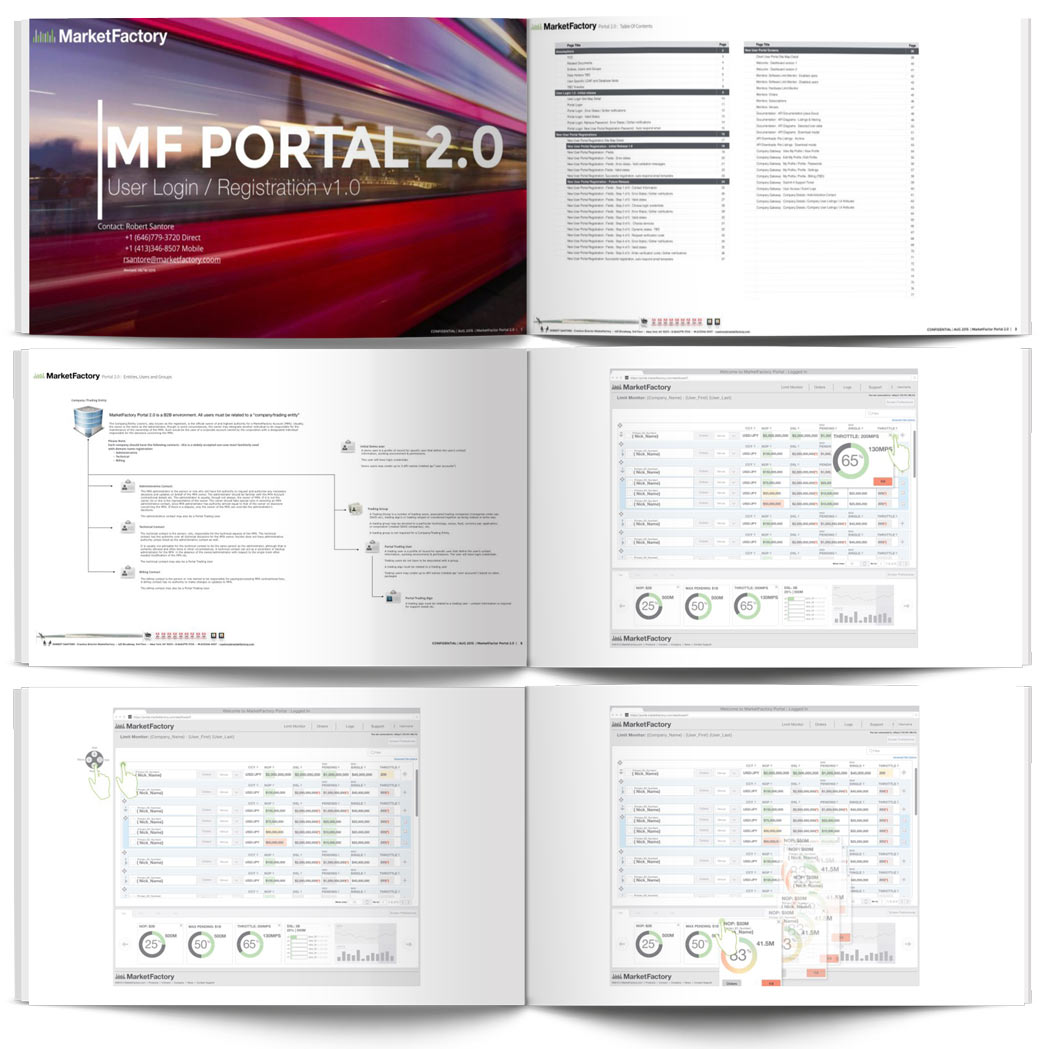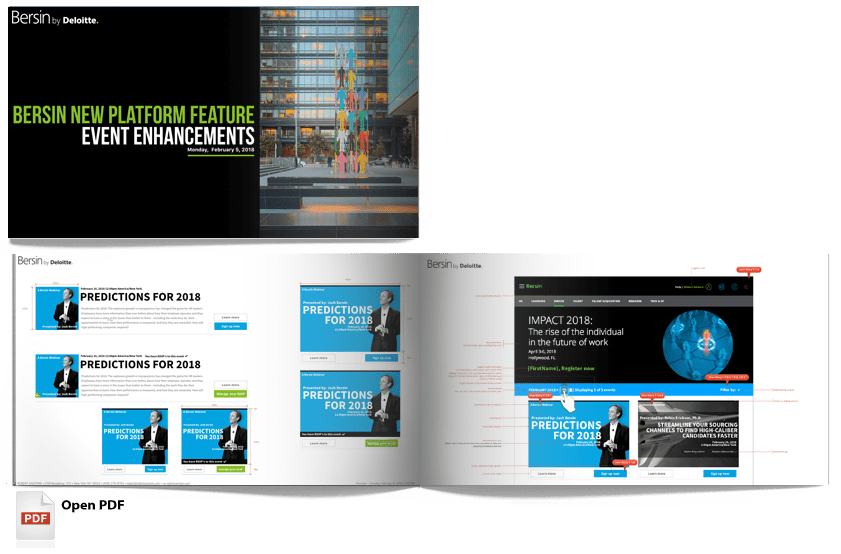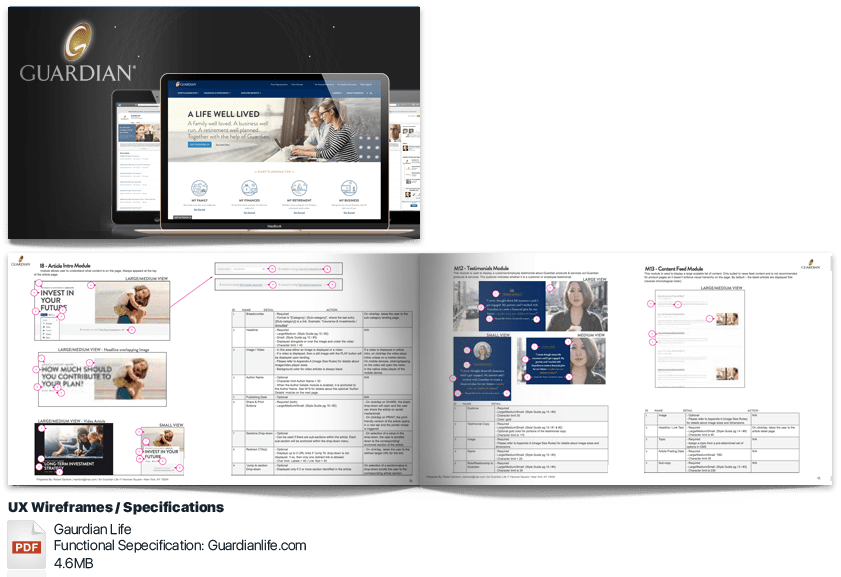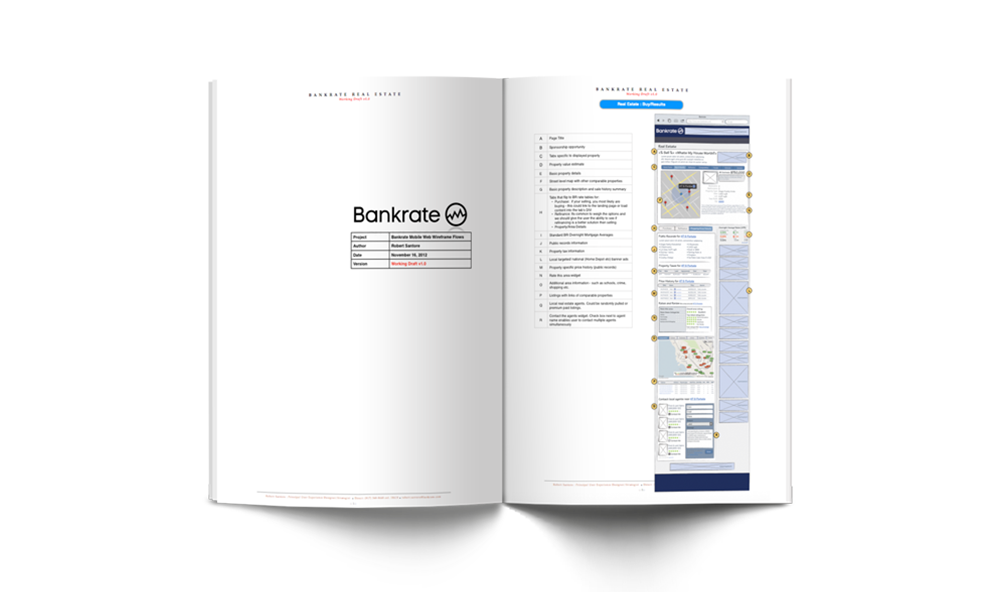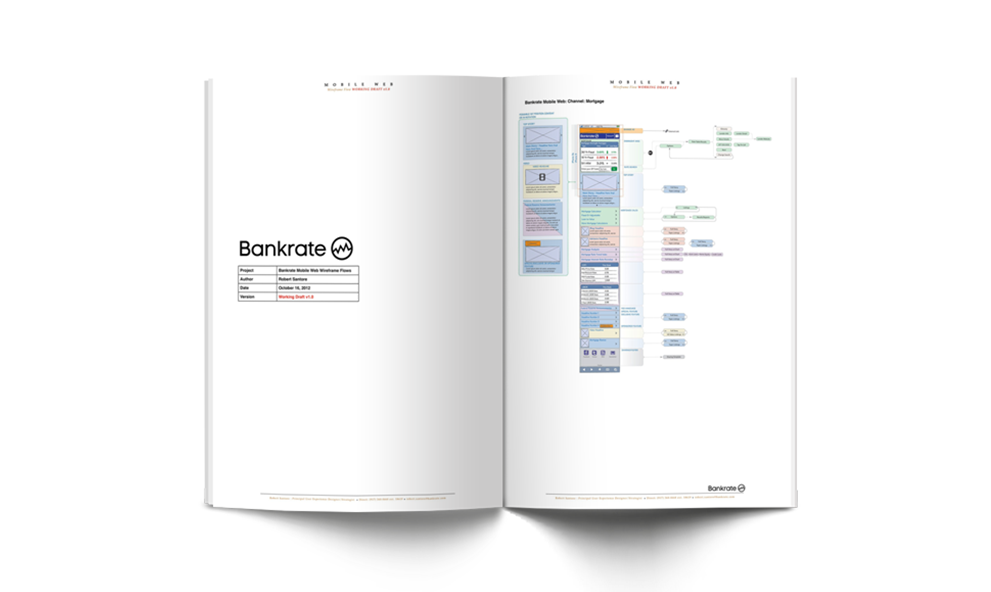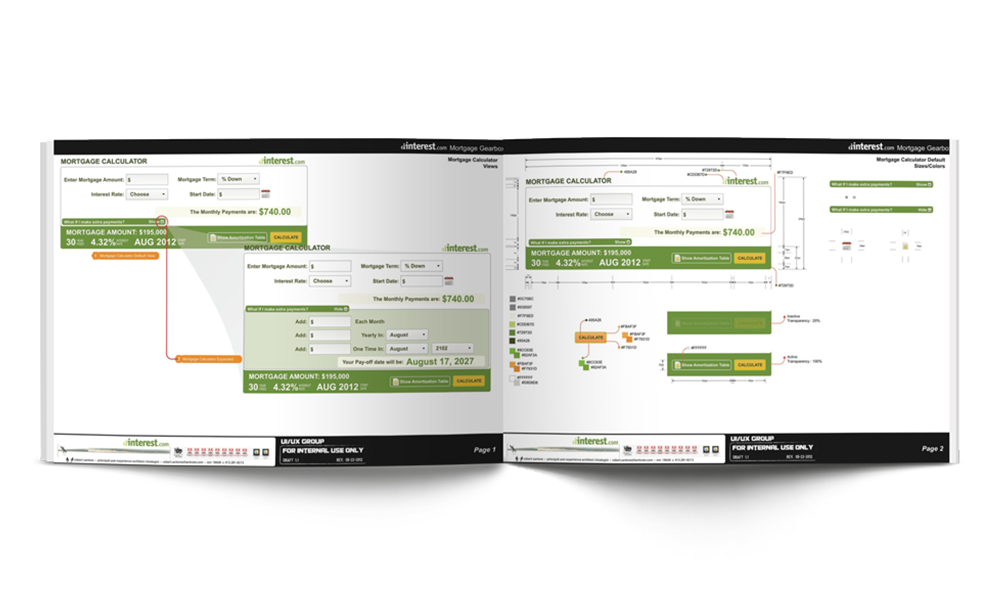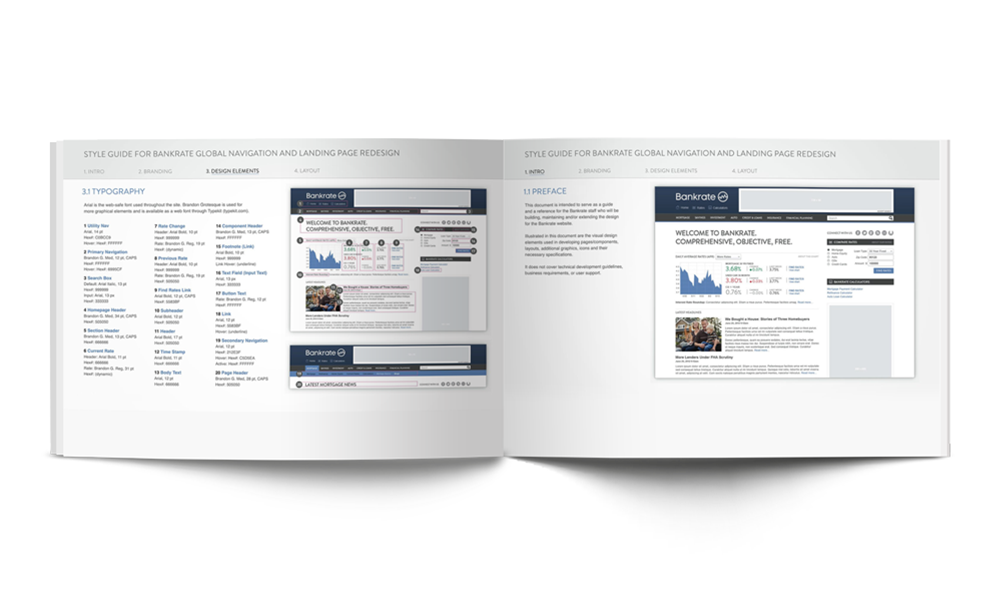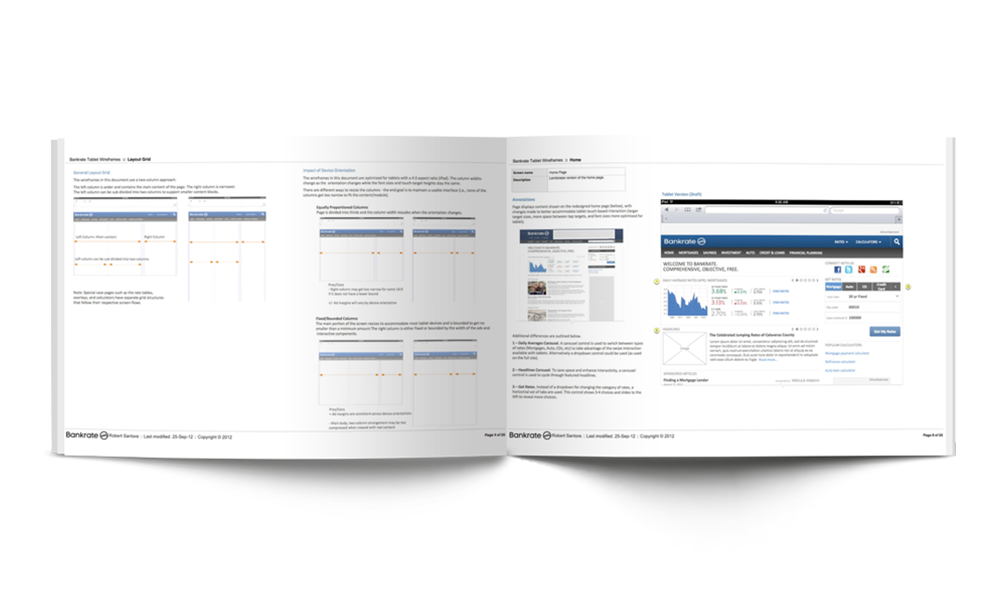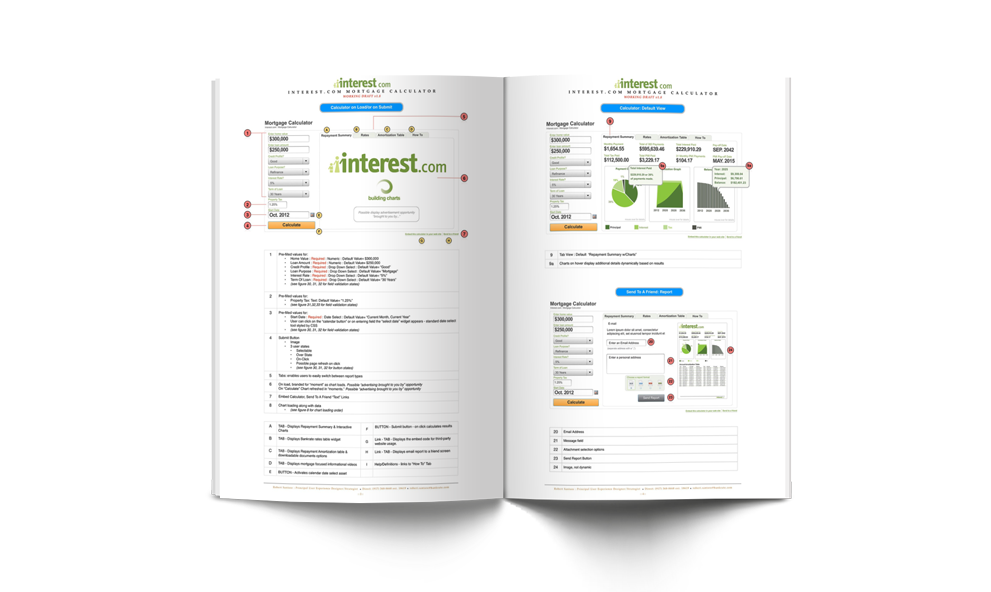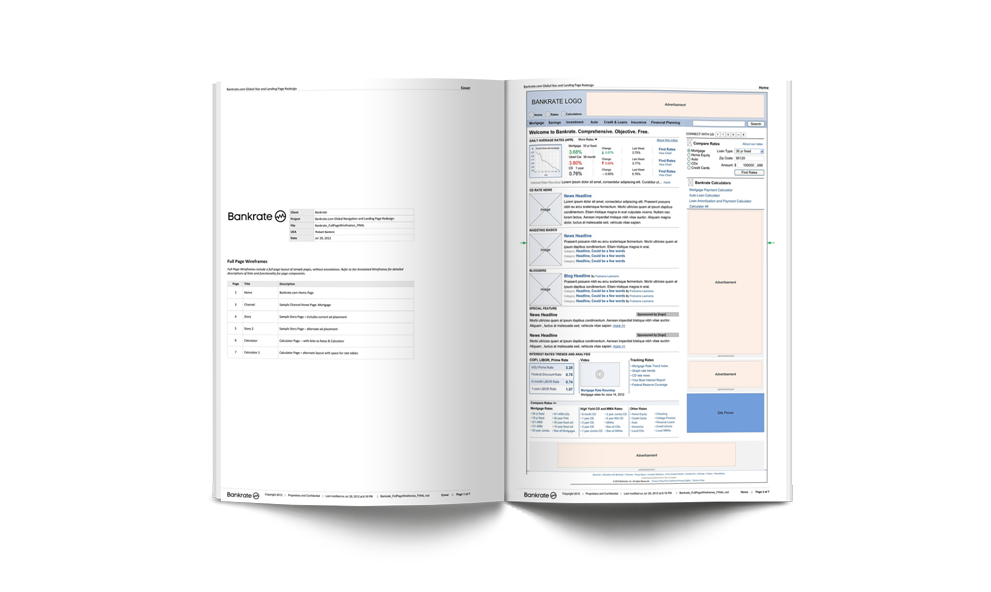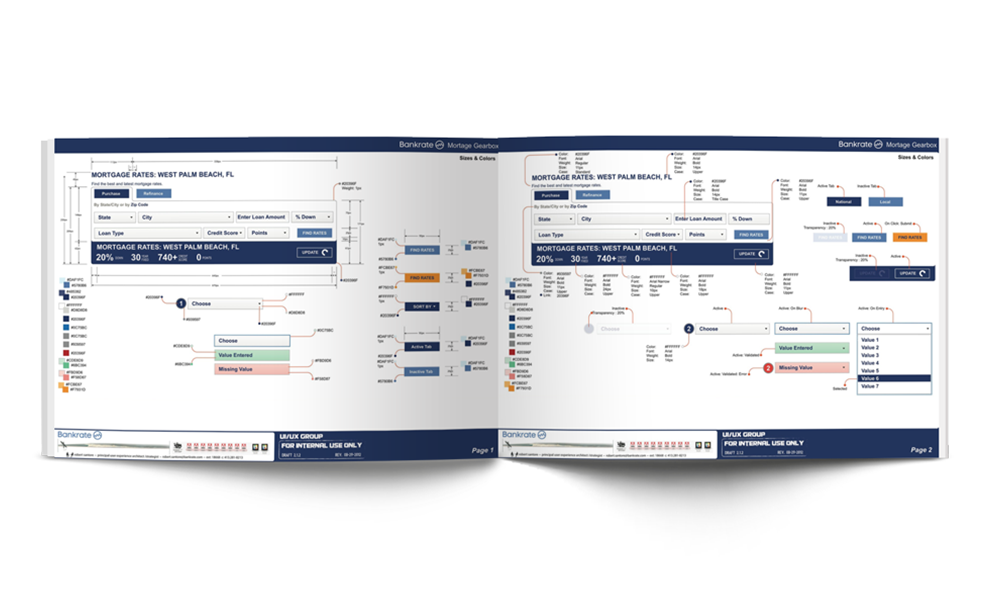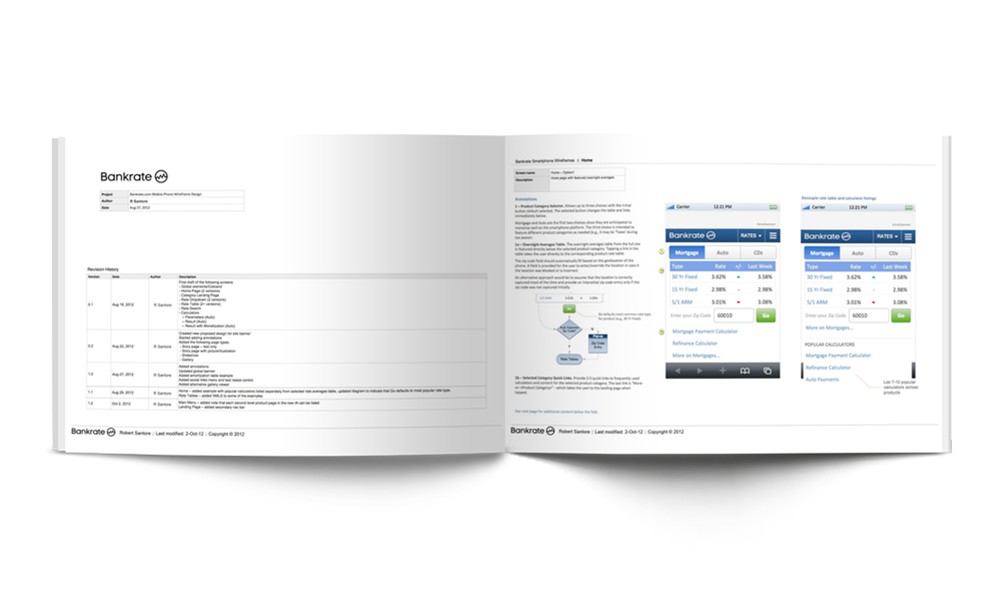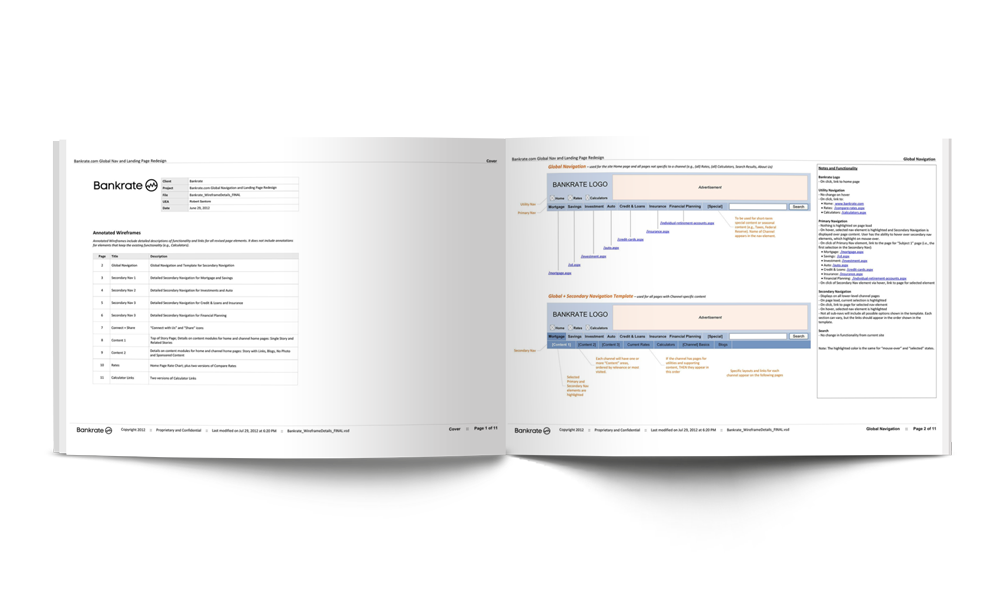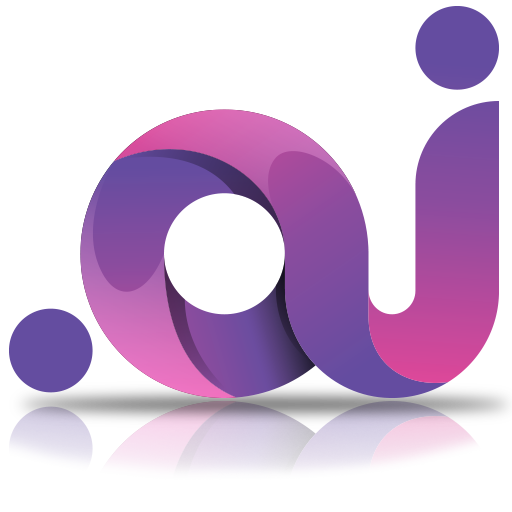 By Robert Santoré, Global Design Authority, Chief Design Officer
By Robert Santoré, Global Design Authority, Chief Design Officer
NEORIS enterprise UX & design (EUX-D) delivers meaningful and measurable solutions that help solve our client’s challenges.
Image: MKTG.AI production interface learn more
EUX-P/D 2017 ~ 2022
In conclusion, my journey from 2017 to 2024 has been one of growth, learning, and adaptation.
The core of my philosophy remains user-centric, but the tools, methodologies, and priorities have evolved.
As we look to the future, I remain committed to designing experiences that are not only functional and beautiful but also inclusive, sustainable, and humanizing.
Below is a white paper I wrote in 2019 for the annual Cemex/Neoris leadership summit held each January in Buenos Aires, Argentina.
EUX-P/D 2023 ~ 2024…
In reflecting on my journey since 2017, I’ve evolved my perspective on what I call Enterprise User Experience – Product/Design (EUX-P/D), aligning with the rapid advancements and shifting paradigms in our field.
The essence of creating user experiences that not only delight but also empower and include has been at the heart of my work.
As we stand in 2024, several and in some case very new key themes shape my current intellectual thought process:
Human-Centric AI Integration:
Artificial Intelligence has become a cornerstone of modern EUX-P/D design, offering personalized experiences at an unprecedented scale. However, the challenge lies in maintaining a human-centric approach.
My focus has been on designing AI interfaces that feel intuitive and humane, leveraging AI to enhance, not replace, human interaction. Ethical considerations, such as privacy and transparency, are paramount in my design thinking.
Inclusive and Accessible Design:
Inclusivity is no longer optional; it’s a necessity. My approach has expanded to ensure that digital products are accessible to everyone, regardless of ability or background.
This means going beyond compliance to genuinely understanding and designing for a diverse range of users. I’ve embraced global design standards and continuously educate myself on the nuances of cultural and physical differences, aiming to create products that are truly universal.
Sustainability in Digital Product Design:
The environmental impact of digital services has become a critical concern. I’ve been advocating for and implementing practices that reduce the digital carbon footprint of the products I design.
This includes optimizing resource usage, promoting digital minimalism where appropriate, and considering the lifecycle impact of design decisions.
Adaptive and Responsive Design:
With the proliferation of devices and screen sizes, responsive design has evolved into something more complex and nuanced.
My current work focuses not just on adapting to different screen sizes but also on responding to the user’s environment, context, and preferences in real-time, creating a truly adaptive digital experience.
Embracing New Interaction Models:
Voice, gesture, and augmented reality (AR) have opened new frontiers for EUX-P/D.
I’ve been exploring how these interaction models can coexist with traditional interfaces to create seamless user journeys. The challenge is to design for these new modalities in ways that feel natural and intuitive.
Designing for Mental Well-being:
An area of growing importance is the impact of digital products on mental health.
My designs now consider the psychological effects of technology, aiming to promote positive behaviors and reduce digital stress.
Features like “digital well-being” tools and mindful notifications reflect this commitment.
Continuous Learning and Adaptation:
The field of UX/UI is ever-evolving, and staying at the forefront requires a commitment to continuous learning and adaptation.
I’ve been engaging with emerging technologies, experimenting with new tools, and collaborating across disciplines to ensure that my work remains relevant and impactful.
Revised 02/02/2024
This reflection incorporates advancements and shifts in EUX-P/D , blending current trends with hypothetical insights from Robert Santoré’s perspective.
Reflecting on my journey with enterprise user experience and product design/design, it’s clear that the path to transforming enterprise environments is both a formidable challenge and a deeply rewarding venture.
Embracing enterprise UX has allowed me to make a profound impact on the industries that are often overlooked by the design revolution yet are in dire need of it. Here’s why I believe in the power and potential of enterprise UX going forward into 2024 and beyond:
The Opportunity for Impact
Enterprise UX focuses on the internal tools that run the backbone of industries. From logistics and HR portals to inventory and content management systems, these tools may lack the glamour of consumer apps but are critical to operational success. My experience has taught me that improving these systems can significantly enhance employee productivity and, by extension, customer satisfaction.
The Unique Challenge
Yes, enterprise environments can sometimes be frustrating with their complex bureaucracies and slow decision-making processes. However, the satisfaction of untangling these challenges and delivering solutions that streamline operations is unparalleled. The potential to affect change on a massive scale, improving the day-to-day work life of thousands, is a compelling reason to dive into this field.
The Ripple Effect
By applying high-quality UX principles to enterprise software, we not only enhance user satisfaction but also support the organization’s broader goals and values. This alignment is crucial for fostering a culture that values design thinking and user-centricity across all levels of the organization.
The Business Case
Enterprise UX is not just about making things look better; it’s about enhancing efficiency, reducing costs, and driving innovation. For instance, optimizing a workflow that saves employees time can translate into significant financial savings for a company. Moreover, design-driven companies have shown to outperform the market, underscoring the tangible benefits of investing in UX.
Bridging the Consumer-Enterprise Gap
In today’s world, the distinction between consumer and enterprise user expectations is blurring. Employees expect the same level of polish and functionality in their work tools as they do in their personal apps. This shift represents a significant opportunity for businesses to rethink how they design their internal tools.
The Process and the Impact
At Neoris, we’ve developed a methodology that combines user research, interaction, and visual design to create solutions that are not only visually appealing but also highly functional and intuitive. Our work with a large municipal government’s Network Operation Center is a testament to the power of thoughtful design. By consolidating over 30 disparate applications into a unified, user-friendly platform, we dramatically improved efficiency and user satisfaction.
Looking Ahead
As we continue to push the boundaries of enterprise UX, the focus on integrating next-gen technologies like AI, machine learning, and mobile capabilities becomes increasingly important. These technologies offer new ways to enhance user experiences and drive further efficiencies.
Why Robert Santoré?
Choosing to specialize in enterprise UX and colaborate with Robert will enable your enterprise to tackle some of the most significant and impactful design challenges facing large organizations today. The work may be complex, but the rewards—in terms of cost savings, employee morale, and customer loyalty—are immense. I know this shit. Let’s Do Great Things Together!
UBNETWORKS, Voodoovox (YouTube), BankRate.com, Marketfactory, The City Of New York’s Office Of Information Technology, Cemex/Neoris
The approach I implemented at Cemex/Neoris was holistic, combining rigorous user research with innovative design practices to deliver solutions that not only meet but exceed our clients’ expectations. As we look to the future, the role of enterprise UX will only grow in importance, offering endless opportunities to drive change and create value.
The City Of New York’s Office Of Information Technology
Imagine capturing significant cost savings while boosting employee morale and customer loyalty. Yes, those 50,000 people used the software we developed because they didn’t have a choice, and sure, that completely predictable technology stack is a decade out-of-date. But, despite its quirks, doing UX work for enterprise clients is an opportunity for me and my teams to spread good design to the industries that need it most, and this scenario is right in the sweet spot of my design and leadership process and principals.
Enterprise UX-P/D is a term for work done on internal tools—software used by employees, not consumers. My work includes enhancing:
-
- Transportation & Logistics systems
- HR portals
- Inventory tracking apps
- Content management systems
- Intranet sites
- Proprietary enterprise software
- SAP, Service Now and other legacy platform optimization
My team’s starting with UBNetworks, TechSpace, Voodvoovo, BankRate.com, MarketFactory, FactSet, Guardian Life, The New York City Office Of Information Technology & Cemex/Neoris has enabled me to glean valuable insights from developing successful solutions for Fortune 500 engagements.
Why would I choose to specialize in enterprise design when I could do more interesting work in leaner, more agile, consumer-focused B2C commerce-friendly companies? Here’s why:
Isn’t big business antithetical to design culture? Often, yes.
Working with enterprise clients can be a frustrating exercise filled with endless meetings and labyrinthine bureaucracy.
Yet, it’s also immensely rewarding for me, offering unique challenges and creatively satisfying work.
My EUX professionals and I live to solve problems, and few problems are larger than those found within the depths of a global organization.
After all, Fortune 500s often have a “just get it done” attitude toward internal tools, resulting in experiences that aren’t well-designed or tested.
By giving internal enterprise tools the same attention to experience that’s given to consumer-facing products, I’m improving the lives of the user base and supporting the organization’s values and brand.
Why bother with enterprise work? It’s often about solving ancillary problems by creating tools that facilitate an organization’s primary goals. These problems might not be as compelling or visible as the goals they support, but they’re just as necessary to solve.
A company might build the best-designed cars in the world, but it won’t matter if its quality assurance process is hobbled by unusable software. Good design enables enterprises to do the work they were founded to do.
Remember, enterprise employees are also consumers, and they’ve come to expect consumer-level design in all the tools they use daily. Why shouldn’t a company’s inventory software or HR portal be as polished as Evernote, Pinterest, or Instagram? When a consumer app is poorly designed, users can delete it. When an enterprise app is poorly designed, its users are stuck with it.
The stakes are enormously high. The sheer scale of enterprise clients magnifies the effects of good and bad design alike. Small inefficiencies in large organizations result in extra costs passed on to the end user in time spent, money lost, and frustration increased.
“…if you optimize the UX on a series of screens so what was once a 5 minute task is now a 2.5 minute task, then you’ve increased a person’s productivity by 100%.That’s huge. HUGE. If the company has 100 phone agents who have an average salary of $40,000 + benefits (~$8,000) (+ an unknown amount for overhead), you could either release or re-task those agents on other activities with a savings of $2,400,000/year. (half of 100 agents x $48,000).”
Likewise, when an enterprise prioritizes user experience for its internal tools, it becomes a more effective organization. A recently released business index shows that design-driven companies outperformed the S&P average by 228% over the last ten years.
Neoris EUX increases business value by making the workforce more productive and workflows more efficient. Our Enterprise User Experience Design Team will deliver on that promise.
Now applying these principles to the enterprise, I see opportunities to increase worker productivity and optimize enterprise workflows. Great cost savings can be achieved through more efficient systems and a more productive workforce, benefiting employee morale and retention.
Most software is developed without any input from the end user. Research-driven methods can help realize cost savings, increase employee morale, and strengthen customer relations.
For over 3 years, EUX has supported the Network Operation Center (NOC) for the largest municipal government organization in the United States. As a trusted partner, my EUX team helped identify operational efficiencies with the potential for significant cost savings.
The original platform consisted of over 30 proprietary applications and was used by over 30,000 city employees & another 25,000 third-party providers to provide services 24/7/365. Daily tasks were arduous and cumbersome. End users were required to login to each individual application. Workflows cut across multiple applications, requiring the end user to toggle back and forth to accomplish standard tasks. Each of the 30 applications had a unique user interface (UI) and inconsistent user experience (UX). The cognitive load was overwhelming.
Carrying out even simple tasks was inefficient. An EUX assessment on the platform initiated with a
Heuristic review to assess the applications, identify usability problems, and evaluate compliance with recognized best-practice design principles.
We assessed the systems for information density and determined that there were approximately 5,300 screens, each with information overload. Empirical data showed that various subtasks required ‘swivel chairing,’ where a user had to toggle between applications and often cut and paste between applications to perform typical tasks.
The solution aimed at developing a ‘single pane of glass,’ where users could login once and access services for each. The initial engagement was to develop a plan for creating a new, single, mobile-first & responsive interface, unifying the systems to significantly improve the user experience, thereby increasing user satisfaction, efficiency, productivity, and engagement.
The EUX team used a customized adoption of both an Agile engineering and Visual Agile Design methodology to quickly develop and execute a campaign to engage end users. We developed dynamic wireframes based on initial feedback and findings, then took an iterative approach in modifying the wireframe prototypes as they were tested with user groups until the new user experience and user interface was deemed optimal.
Implementing research-driven UX, we also incorporated ‘Nextgen’ technologies to increase effectiveness even more. This included mobile capabilities, machine learning (ML) and chatbots, integrated camera and location services, and more.
We created a single unified desktop assistant. Launching the assistant gave quick access to key system features without logging into each application. Easy access to assigned tasks, analytics, events, and daily rewards – with built-in game mechanics to help improve user engagement. The game strategy is built around key performance metrics, enabling user vs. user and group vs. group competitions.
The Analytics Pane provides easy insight into various key performance metrics at any time. Users can easily locate, complete, or assign tasks from the desktop assistant.
Early results showed a:
- 60% reduction in time to complete typical tasks,
- 85% reduction in “swivel chairing”,
- 65% fewer screens.
While the road to platform optimization through EUX is challenging, the goals are simple. True ROI will be realized when the user experience achieves qualities that are adaptive, intuitive, efficient, anticipatory, and contextual.
The Neoris EUX methodology provides a roadmap for eliminating obstacles and achieving the greatest benefits from technology assets. Our approach, Continuous Adaptive Planning and Design (CAPD), emphasizes the delivery of continuous work product and incorporates continuous feedback.
Enterprise UX design can deliver meaningful and measurable results across the organization. Neoris helps identify strategic EUX opportunities, assesses the current state, and develops a plan where a program can have the biggest impact with the biggest business value. We track and measure success to demonstrate the return on investment.
More and more enterprise businesses are drawing upon concepts born in the direct-to-consumer world, meant to attract and retain customers through proven design and user experience principles, and implementing them for enterprise users.
Big businesses are finding cost savings through worker productivity and optimized workflows, a more satisfied and responsive workforce, and accessibility to systems and reduced overall errors.
Contact us now for a heuristic review of your system and consultation on how to move towards EUX optimization in your organization.
Investing in UX leads to ROI, increased engagement, more sales, and growth. Design-first companies are leading disruption. This design-first foundational principle, when embedded into the fabric of an organization, has a profound impact on both customer/user experience and garners significant increases in engagement and a greater ROI.
- UX saves companies money,
- UX increases sales,
- UX increases customer loyalty,
- UX helps companies be & stay competitive.
My “General” process
I initailly developed this process at UBNetworks running my digital agency Man Rabbit House and implemented it in companies I colaborated with,
such as Voodvoovox, BankRate, MarketFactory, The City Of New York’s Office Of Technology, Cemex/Neoris (view resume)
HOW IS EUX-P/D EFFECTING BUSINESS?
The evolution of EUX-P/D and how it takes hold within originations & rises to the top of development…That’s enterprise user experince and product design. This EUX-P/D process shepherds clients to the top of the pyramid.
Design first companies are the companies leading disruption. This design first foundational principal when embedded into the “fabric of an organization” has profound impact in both customer/user experience and garners significant increases in engagement, and a greater ROI.
SIX Pillars of EUX-P/D
UR USER RESEARCH & TESTING: User Research focuses on understanding user behaviors, needs, and motivations through observation techniques, task analysis, and other feedback methodologies, both qualitative and quantitative. It is the process of understanding the impact of design on an audience.
IA INFORMATION ARCHITECTURE: It’s clear UX design means much more than structuring content. At the same time, good Information Architecture is a foundation of efficient user experience. User Experience takes Information Architecture as its foundation and brings it to the next level.
UX USER EXPERIENCE DESIGN: User Experience Designers define end-to-end experiences that often span multiple touch points and require orchestration and collaboration across all of the design functions.
IX INTERACTION DESIGN: Interaction Designers map and create all touch points and experience flows within a product ecosystem, working hand in hand with web, apps and FW developers.
VX VISUAL DESIGN: Visual Designers create and interpret the design language, across all visual expressions throughout the customer experience, while working hand in hand with Global Brand and World Wide Marketing.
CW UX COPY WRITING: Copy Writers apply common voice and tone throughout the customer experience as well as creating all in-box, on product, and post purchase messaging across multiple languages.
The Service Blueprint
A User Experience (UX) Service Blueprint document is a strategic tool that provides a comprehensive overview of a service in relation to the user’s experience. It not only outlines the service processes and touchpoints from the user’s perspective but also aligns the back-end operations that support those experiences. The value of a UX Service Blueprint lies in its ability to bridge the gap between a service’s intention and its actual delivery, ensuring a cohesive and positive user experience. Here are some of the key highlights of value it offers:
1. Holistic View of the Service:
A UX Service Blueprint provides a complete picture of the service journey, integrating user interactions (frontstage) with internal processes and functions (backstage). This holistic approach enables stakeholders to understand how various components of the service ecosystem work together.
2. Identification of Pain Points and Opportunities:
By mapping out each step of the service process, it becomes easier to identify areas where users might experience frustration or where there are opportunities for improvement. This can lead to targeted innovations that significantly enhance the overall user experience.
3. Improved Coordination Across Teams:
The document serves as a shared reference point for different teams involved in the service delivery, such as design, development, marketing, and customer support. This fosters better communication and coordination, ensuring everyone is aligned with the user’s needs and the service’s objectives.
4. Enhanced Customer Satisfaction:
A well-designed UX Service Blueprint focuses on optimizing user touchpoints and streamlining operations to meet or exceed user expectations. This focus on user satisfaction can lead to increased loyalty, higher retention rates, and positive word-of-mouth.
5. Efficiency and Cost Savings:
By identifying redundant processes, unnecessary complexities, or inefficiencies, the blueprint can guide organizations in streamlining their operations. This not only improves the user experience but can also lead to significant cost savings.
6. Strategic Planning and Innovation:
The document provides a strategic framework for planning future services or features. By understanding the current service landscape, organizations can more effectively innovate and adapt to changing user needs and market demands.
7. Evidence-based Decision Making:
A UX Service Blueprint is often developed based on user research and empirical data. This ensures that decisions regarding service improvements are grounded in actual user needs and behaviors, rather than assumptions.
In summary, a UX Service Blueprint is a valuable document that aids in the design, implementation, and continuous improvement of services. It ensures that user experiences are central to the service delivery process, aligning organizational efforts towards creating meaningful and satisfying user interactions.
Design Specifications
185MB (Yes the file is huge, In some cases I print screens up in full color, full tabloid extra 13″ x 19″ and pin up on our agile wall for review comments.)
185MB (Yes the file is huge, In some cases I print screens up in full color, full tabloid extra 13″ x 19″ and pin up on our agile wall for review comments.)
185MB (Yes the file is huge, In some cases I print screens up in full color, full tabloid extra 13″ x 19″ and pin up on our agile wall for review comments.)
185MB (Yes the file is huge, In some cases I print screens up in full color, full tabloid extra 13″ x 19″ and pin up on our agile wall for review comments.)
185MB (Yes the file is huge, In some cases I print screens up in full color, full tabloid extra 13″ x 19″ and pin up on our agile wall for review comments.)
185MB (Yes the file is huge, In some cases I print screens up in full color, full tabloid extra 13″ x 19″ and pin up on our agile wall for review comments.)
185MB (Yes the file is huge, In some cases I print screens up in full color, full tabloid extra 13″ x 19″ and pin up on our agile wall for review comments.)
185MB (Yes the file is huge, In some cases I print screens up in full color, full tabloid extra 13″ x 19″ and pin up on our agile wall for review comments.)
185MB (Yes the file is huge, In some cases I print screens up in full color, full tabloid extra 13″ x 19″ and pin up on our agile wall for review comments.)
185MB (Yes the file is huge, In some cases I print screens up in full color, full tabloid extra 13″ x 19″ and pin up on our agile wall for review comments.)
185MB (Yes the file is huge, In some cases I print screens up in full color, full tabloid extra 13″ x 19″ and pin up on our agile wall for review comments.)
185MB (Yes the file is huge, In some cases I print screens up in full color, full tabloid extra 13″ x 19″ and pin up on our agile wall for review comments.)
185MB (Yes the file is huge, In some cases I print screens up in full color, full tabloid extra 13″ x 19″ and pin up on our agile wall for review comments.)
185MB (Yes the file is huge, In some cases I print screens up in full color, full tabloid extra 13″ x 19″ and pin up on our agile wall for review comments.)
185MB (Yes the file is huge, In some cases I print screens up in full color, full tabloid extra 13″ x 19″ and pin up on our agile wall for review comments.)
185MB (Yes the file is huge, In some cases I print screens up in full color, full tabloid extra 13″ x 19″ and pin up on our agile wall for review comments.)
WHERE I LIKE TO SIT
Where ROBERT sitS
Where ROBERT likeS to be
Where ROBERT doES HIS best work
ROBERT'S sweet spot.
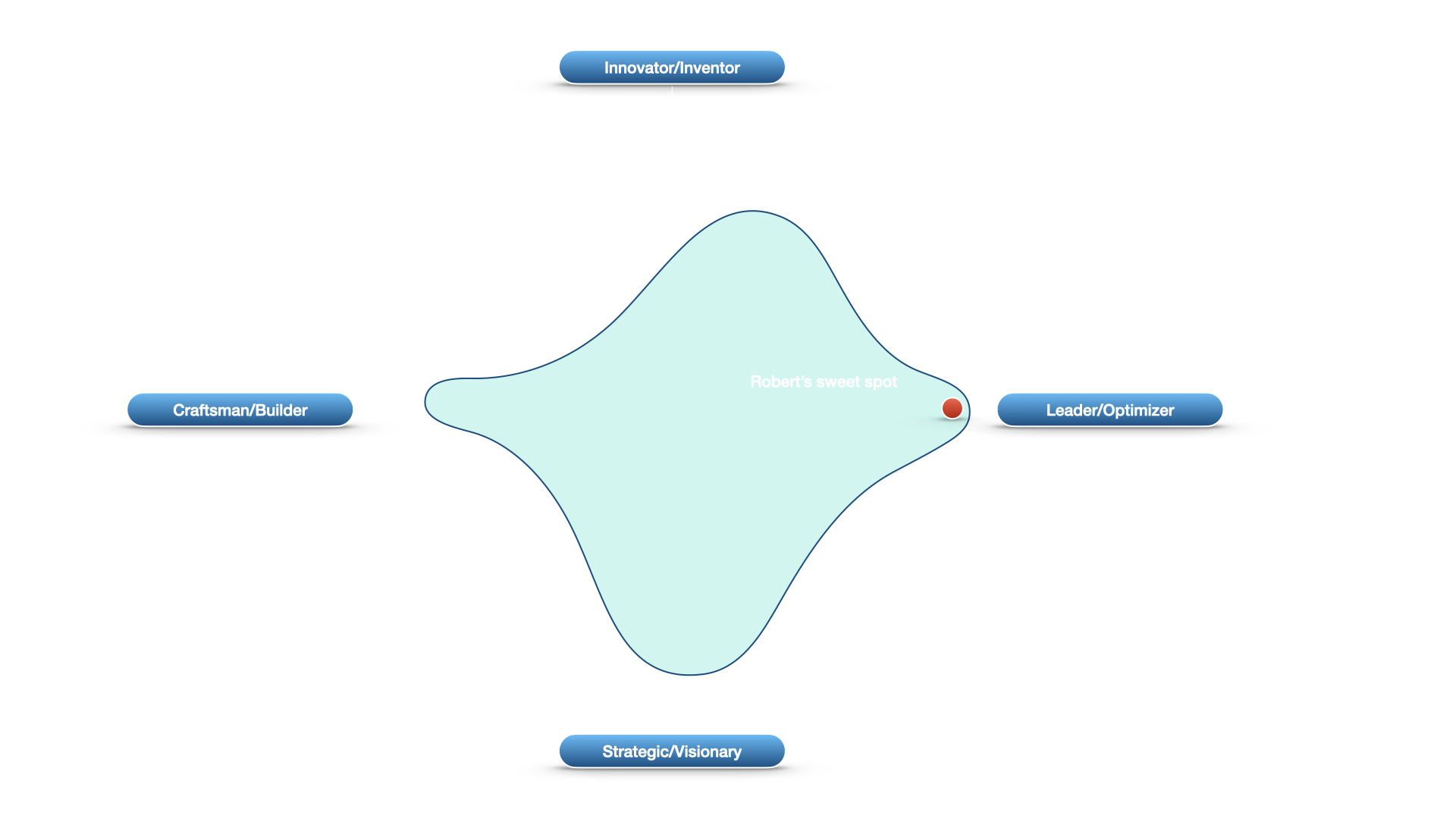
Let’s make something amazing together
Location
111 Bowery, 2nd Floor
New York, NY 10002
Phone/WhatsApp
+1 (936)548-2264
The end-to-end portfolio, gallery, artists or creative professional
multi-user, online asset management platform.
Copyright 2024 © Robert Santoré dba Man Rabbit House LLC | Privacy
Portfolio: The Home Depot: Pest Control learn more
